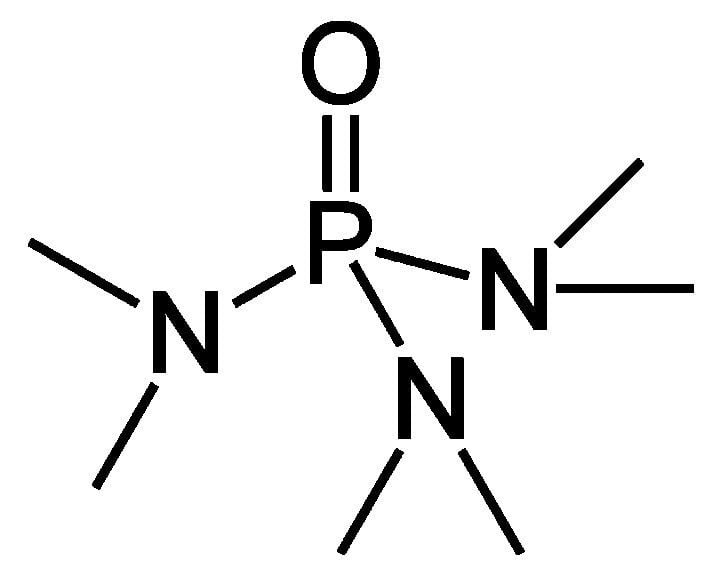Formula C6H18N3OP Molar mass 179.2 g/mol | Boiling point 235 °C Density 1.03 g/cm³ | |
 | ||
Appearance clear, colorless liquid | ||
Lab safety hexamethylphosphoramide hmpa
Hexamethylphosphoramide, often abbreviated HMPA, is a phosphoramide (i.e. an amide of phosphoric acid) with the formula [(CH3)2N]3PO. This colorless liquid is a useful polar aprotic solvent and additive in organic synthesis.
Contents
- Lab safety hexamethylphosphoramide hmpa
- What does hexamethylphosphoramide mean
- Structure and reactivity
- Applications
- Alternative reagents
- Toxicity
- References
What does hexamethylphosphoramide mean
Structure and reactivity
HMPA is the oxide of the highly basic tertiary phosphine hexamethylphosphorous triamide (HMPT), P(NMe2)3. Like other phosphine oxides (e.g., triphenylphosphine oxide), the molecule has a tetrahedral core and a P-O bond that is highly polarized, with significant negative charge residing on the oxygen atom.
Compounds containing a nitrogen-phosphorus bond typically are degraded by hydrochloric acid to form a protonated amine and phosphate.
Applications
HMPA is a specialty solvent for polymers, gases, and organometallic compounds. It improves the selectivity of lithiation reactions by breaking up the oligomers of lithium bases such as butyllithium. Because HMPA selectively solvates cations, it accelerates otherwise slow SN2 reactions by generating more "naked" anions. The basic nitrogen centers in HMPA coordinate strongly to Li+.
HMPA is a ligand in the useful reagents based on molybdenum peroxide complexes, e.g., MoO(O2)2(HMPA)(H2O) is used as an oxidant in organic synthesis.
Alternative reagents
Dimethyl sulfoxide can often be used in place of HMPA as a solvent. Both are strong hydrogen bond acceptors, and their oxygen atoms bind metal cations. Other alternatives to HMPA include the tetraalkylureas and the cyclic alkylureas like DMPU.
Toxicity
HMPA is only mildly toxic but has been shown to cause nasal cancers in rats. Still, many organic chemists regard HMPA as an exceptionally hazardous molecule due to its known carcinogenicity, and avoid its use when possible. HMPA can be degraded to less toxic compounds by the action of hydrochloric acid. For laboratory uses it can be substituted by the less carcinogenic solvent DMI (1,3-Dimethyl-2-imidazolidinone).
